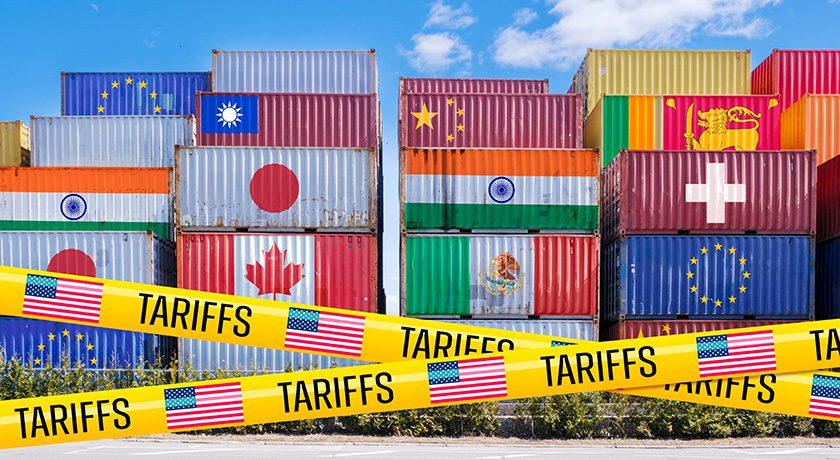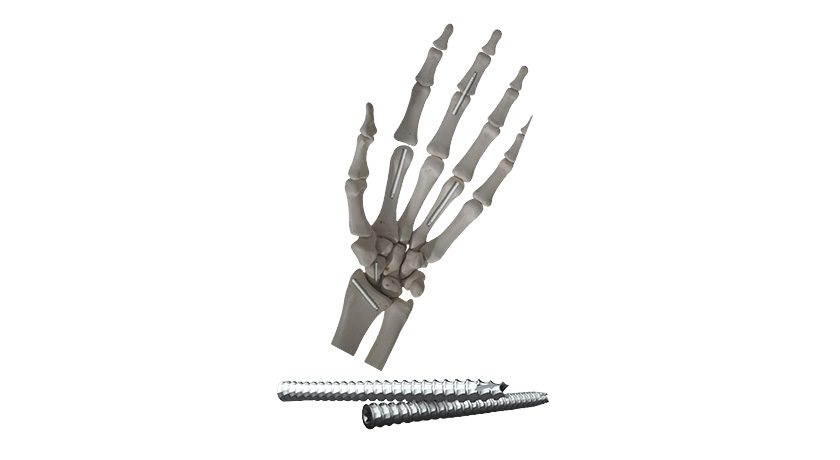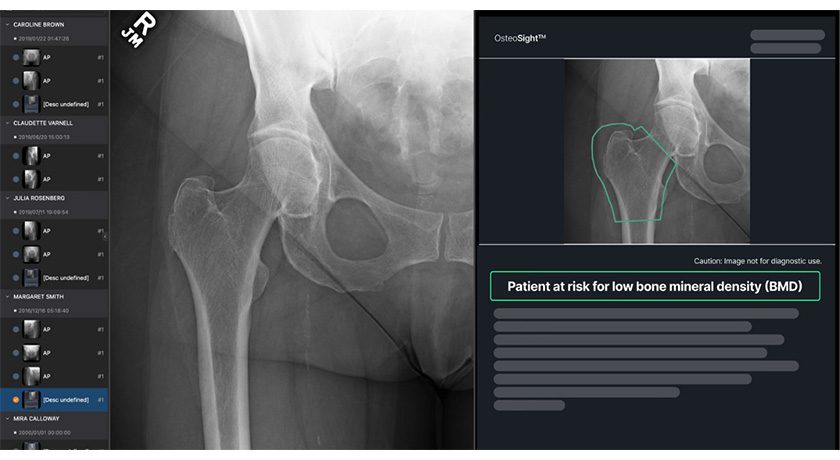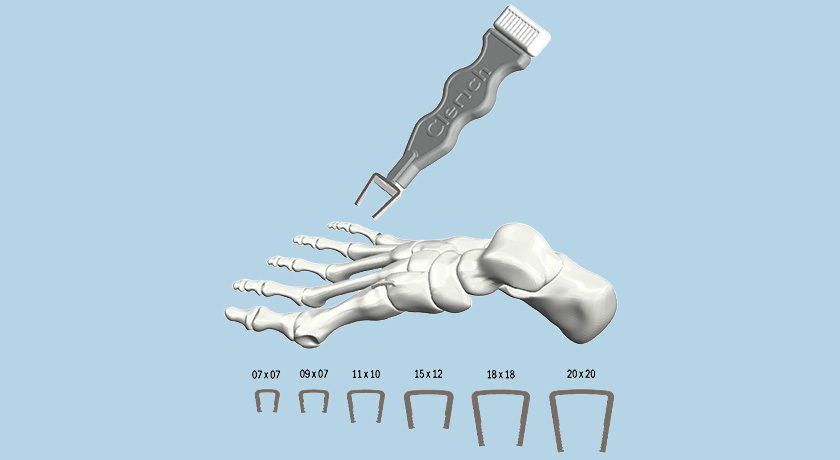

 Copy to clipboard
Copy to clipboard 
The Trump Administration’s evolving tariff policies have created significant complexity for orthopedic companies as they update their manufacturing and supply chain strategies to respond to current and potential changes. Tariffs were a key topic at OMTEC 2025, held in mid-June. Industry leaders stressed the importance of sifting through the noise of the fluctuating tariff rates to prioritize necessary actions.
The hefty tariffs originally proposed by the Trump Administration on April 2 were temporarily dropped to 10% for most countries, and are expected to go back into place on August 1 for those that fail to sign a new trade agreement with the U.S. China, the U.K. and Vietnam are among the few countries that have struck a deal with the U.S.
Kim Doyle, a Partner at Plante Moran, spoke at OMTEC on a panel about today’s supply chain climate and said the situation changes seemingly every day. “We’re advising our clients to continuously monitor the situation, whether it’s by appointing an individual or a group of individuals to track the updates,” Ms. Doyle said. “In the last few weeks, we had tariffs on steel and aluminum jump up to 50%, the ruling came out that certain tariffs under the IEEPA are unlawful, and we’re waiting for additional rulings that could change it again.”
Here is additional insight and advice shared at OMTEC.
Avoiding Missteps
Ms. Doyle said that many orthopedic companies struggle with correctly understanding the meaning of the country of origin and how that impacts their tariff calculation. She advised companies to seek wise counsel on their tariff responses.
“The complexity of the tariffs is significant,” Ms. Doyle said. “A lot of criteria go into understanding and assessing your impact from the tariffs, whether it’s your HTS codes, country of origin, bill of materials or trade agreements. Some of the biggest missteps we’ve seen in talking to trade lawyers are those around the country of origin. Companies are making an assumption that the last place of processing or the last place of shipment is the country of origin, and that’s not the case. It has to do with the value added and what transformation is happening at each step along the supply chain. It’s important to work with trade lawyers and customs brokers to understand the country of origin and make sure that your HTS classifications are appropriate.”
Deciding to Manufacture in the U.S.
OEM, CM and financial executives who spoke at the keynote described orthopedic supply chains as fragile. Despite lessons learned during the pandemic, supply chains have not become more resilient, said Nate Folkert, CEO of Orchid Orthopedic Solutions. He said companies could benefit from moving—and keeping — a significant portion of their manufacturing in the U.S. long term.
“Supply chains have been upended twice in five years. If you’re not planning to do a significant amount of manufacturing in the U.S., I think you’re making a big mistake,” he said. “If you don’t at least dual source in the United States for your key products, you’re making a big mistake.”
Adding Flexibility
OEM supply chain leaders said companies with global strategies should have plans in place to allow them to move manufacturing quickly. Benjamin Rennie, Supply Chain Manager at Choice Spine, said while shifting manufacturing is hard to do in the highly-regulated orthopedic industry, it’s important that companies identify the products that can be moved.
“We can be flexible, because our QMS does not have strict hurdles to jump. At a larger company, it could take nine to 18 months to transfer manufacturing. Where possible, build flexibility into your QMS so that you can manufacture internationally or pull it back to the U.S.,” Mr. Rennie said. “As a small business, our logistics are not sophisticated enough to segregate BAA and TAA procurement laws, so I have a hard, fast rule where we only manufacture reusable instruments and low-dollar consumables overseas. We were able to move those instruments back on shore for the short term. We’re monitoring the market to determine when we can go back to an international approach.”
A greater understanding of the tariff rates and implications for orthopedic companies is expected to emerge in the coming months. Public companies noted marginal exposure to the proposed tariffs during 1Q25 earnings calls and will likely provide updates as second quarter reporting begins later this month.
The Trump Administration’s evolving tariff policies have created significant complexity for orthopedic companies as they update their manufacturing and supply chain strategies to respond to current and potential changes. Tariffs were a key topic at OMTEC 2025, held in mid-June. Industry leaders stressed the importance of sifting through the noise...
The Trump Administration’s evolving tariff policies have created significant complexity for orthopedic companies as they update their manufacturing and supply chain strategies to respond to current and potential changes. Tariffs were a key topic at OMTEC 2025, held in mid-June. Industry leaders stressed the importance of sifting through the noise of the fluctuating tariff rates to prioritize necessary actions.
The hefty tariffs originally proposed by the Trump Administration on April 2 were temporarily dropped to 10% for most countries, and are expected to go back into place on August 1 for those that fail to sign a new trade agreement with the U.S. China, the U.K. and Vietnam are among the few countries that have struck a deal with the U.S.
Kim Doyle, a Partner at Plante Moran, spoke at OMTEC on a panel about today’s supply chain climate and said the situation changes seemingly every day. “We’re advising our clients to continuously monitor the situation, whether it’s by appointing an individual or a group of individuals to track the updates,” Ms. Doyle said. “In the last few weeks, we had tariffs on steel and aluminum jump up to 50%, the ruling came out that certain tariffs under the IEEPA are unlawful, and we’re waiting for additional rulings that could change it again.”
Here is additional insight and advice shared at OMTEC.
Avoiding Missteps
Ms. Doyle said that many orthopedic companies struggle with correctly understanding the meaning of the country of origin and how that impacts their tariff calculation. She advised companies to seek wise counsel on their tariff responses.
“The complexity of the tariffs is significant,” Ms. Doyle said. “A lot of criteria go into understanding and assessing your impact from the tariffs, whether it’s your HTS codes, country of origin, bill of materials or trade agreements. Some of the biggest missteps we’ve seen in talking to trade lawyers are those around the country of origin. Companies are making an assumption that the last place of processing or the last place of shipment is the country of origin, and that’s not the case. It has to do with the value added and what transformation is happening at each step along the supply chain. It’s important to work with trade lawyers and customs brokers to understand the country of origin and make sure that your HTS classifications are appropriate.”
Deciding to Manufacture in the U.S.
OEM, CM and financial executives who spoke at the keynote described orthopedic supply chains as fragile. Despite lessons learned during the pandemic, supply chains have not become more resilient, said Nate Folkert, CEO of Orchid Orthopedic Solutions. He said companies could benefit from moving—and keeping — a significant portion of their manufacturing in the U.S. long term.
“Supply chains have been upended twice in five years. If you’re not planning to do a significant amount of manufacturing in the U.S., I think you’re making a big mistake,” he said. “If you don’t at least dual source in the United States for your key products, you’re making a big mistake.”
Adding Flexibility
OEM supply chain leaders said companies with global strategies should have plans in place to allow them to move manufacturing quickly. Benjamin Rennie, Supply Chain Manager at Choice Spine, said while shifting manufacturing is hard to do in the highly-regulated orthopedic industry, it’s important that companies identify the products that can be moved.
“We can be flexible, because our QMS does not have strict hurdles to jump. At a larger company, it could take nine to 18 months to transfer manufacturing. Where possible, build flexibility into your QMS so that you can manufacture internationally or pull it back to the U.S.,” Mr. Rennie said. “As a small business, our logistics are not sophisticated enough to segregate BAA and TAA procurement laws, so I have a hard, fast rule where we only manufacture reusable instruments and low-dollar consumables overseas. We were able to move those instruments back on shore for the short term. We’re monitoring the market to determine when we can go back to an international approach.”
A greater understanding of the tariff rates and implications for orthopedic companies is expected to emerge in the coming months. Public companies noted marginal exposure to the proposed tariffs during 1Q25 earnings calls and will likely provide updates as second quarter reporting begins later this month.

You’ve reached your limit.
We’re glad you’re finding value in our content — and we’d love for you to keep going.
Subscribe now for unlimited access to orthopedic business intelligence.
CL
Carolyn LaWell is ORTHOWORLD's Chief Content Officer. She joined ORTHOWORLD in 2012 to oversee its editorial and industry education. She previously served in editor roles at B2B magazines and newspapers.







